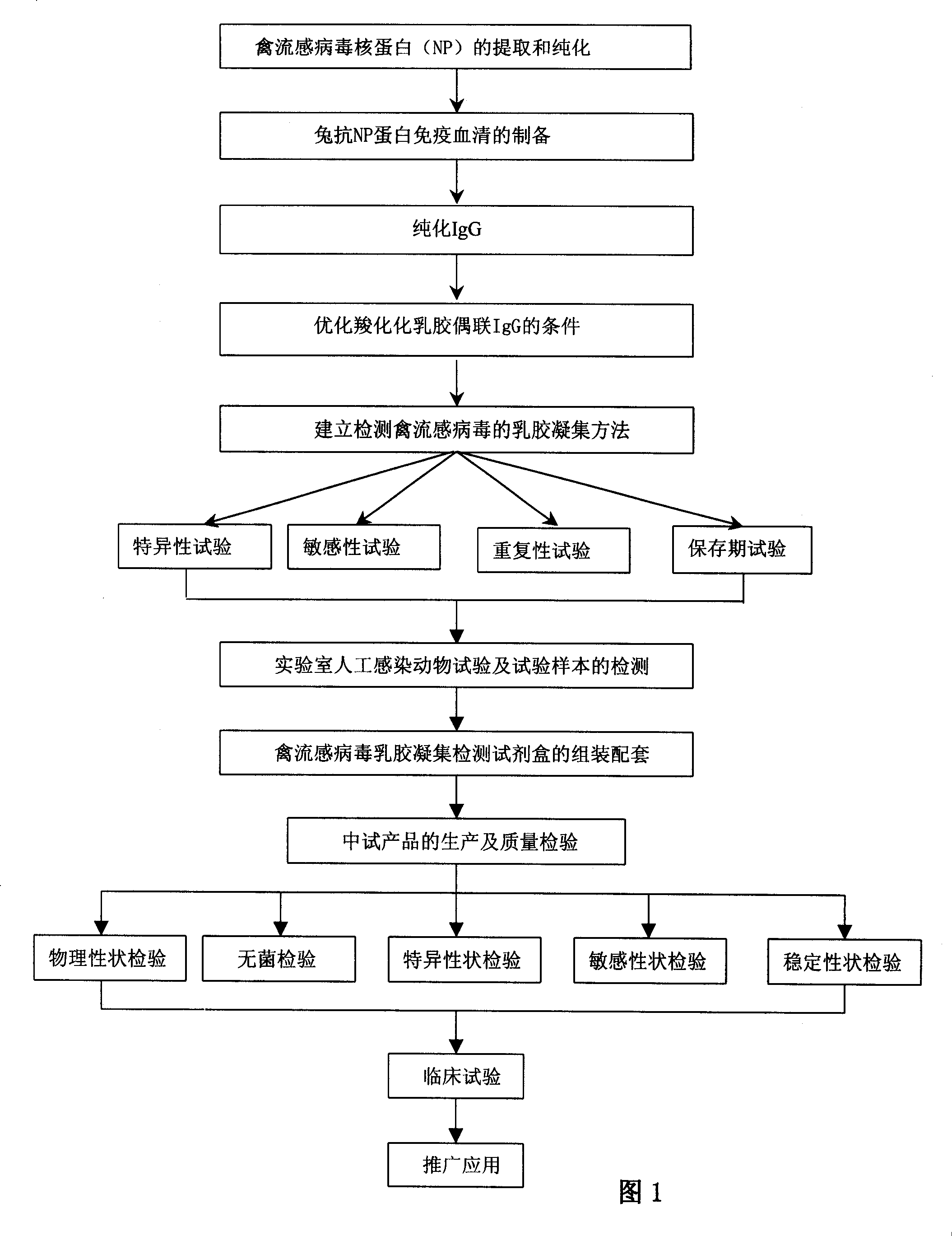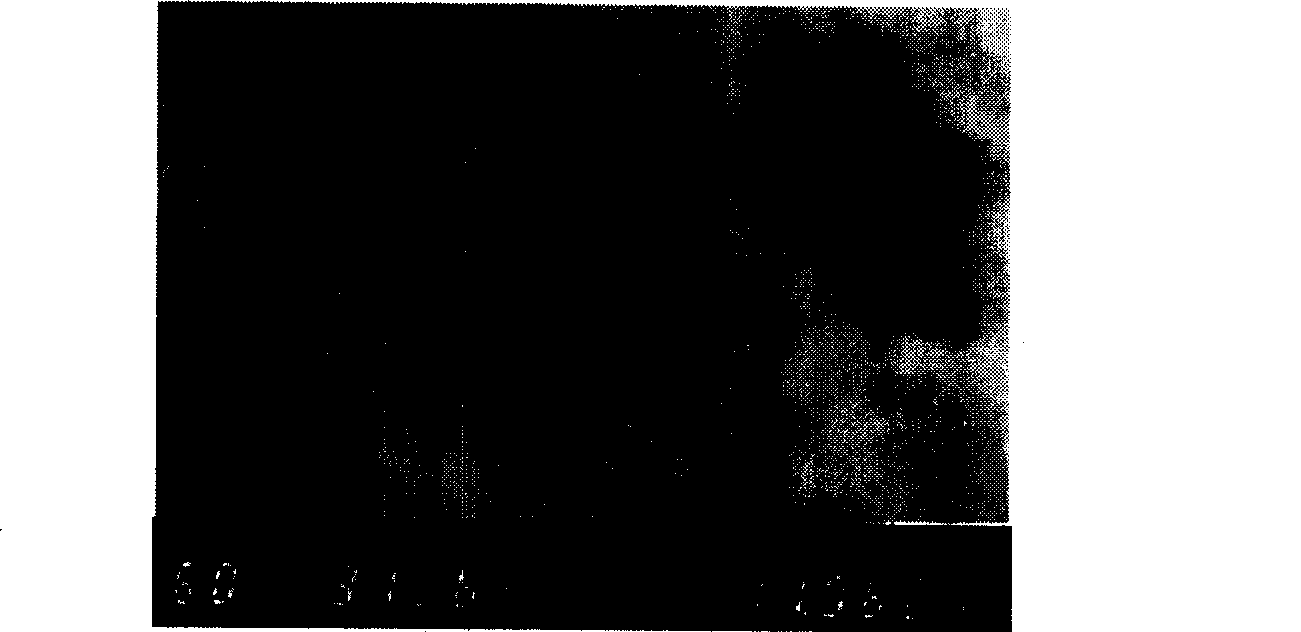Avian influenza virus latex agglutination assay kit and its use
An avian influenza virus and latex agglutination technology, applied in the field of avian immunology, can solve the problems of difficulty in product development, short shelf life of latex reagents, and difficulty in binding to latex surfaces, etc., and achieves a wide range of detection samples, short detection time, and easy operation. Effect
- Summary
- Abstract
- Description
- Claims
- Application Information
AI Technical Summary
Problems solved by technology
Method used
Image
Examples
Embodiment 1
[0037] The specific separation and identification steps are as follows:
[0038] (1) Incidence and necropsy lesions of sick ducks submitted for inspection
[0039] The egg production of laying ducks decreased rapidly (dropped to 10%), and small eggs and deformed eggs were produced. Necropsy showed follicular atrophy, some hyperemia and hemorrhage. Breeding ducklings began to get sick at the age of 20 days, with decadent diet, or even waste, and white loose feces. The respiratory symptoms were not typical, and the main manifestations were neurological symptoms. Previous reports on the symptoms of the same subtype of avian influenza strains were quite different. After 6 days, the mortality rate reached its peak, and the daily death rate was above 5%. The autopsy found that there were hemorrhage points in the coronary groove fat of the heart, and a large area of gray-white strip necrosis appeared in the myocardium, which is also a typical lesion of the diseased duck. Althoug...
Embodiment 2
[0089] (1) Proliferation of virus
[0090] Get QLG-1 virus strain, make 10 with sterilized normal saline -4 Dilute and inoculate specific pathogenic microorganism-free (SPF) chicken embryos into the allantoic cavity, 0.2 mL per embryo, seal the pinhole after inoculation, and continue to incubate at 37°C. Eggs were illuminated once every 12 hours, and the chicken embryos that died 24 hours ago were discarded. The chicken embryos that died 24 hours to 72 hours were cooled at 4°C overnight, and the allantoic fluid of chicken embryos was harvested. The HA titer ≥ 9 log2, the formula is qualified.
[0091] (2) Inactivation of virus
[0092] After freezing and thawing the qualified chicken embryo allantoic fluid for 3 times, add formaldehyde with a final concentration of 0.2%, mix well and replace it into another sterile container, act at 37°C for 24 hours, shake every 6 hours for 1 Second-rate. The allantoic fluid of inactivated chicken embryos was sampled to inoculate 9-11-day...
Embodiment 3
[0105] 1 Determination of the amount of optimally coupled IgG
[0106] Add different amounts of IgG to 1 mL of carboxylated latex suspended in boric acid buffer, increasing from 200 μg, 400 μg, and 600 μg to 1800 μg. Protein amount, calculate the coupling efficiency of IgG, the formula is as follows:
[0107] Coupling efficiency of IgG (%)=(Initial amount of IgG added-remaining amount of IgG) / Initial amount of IgG added×100%
[0108] It has been verified by experiments that in 1 mL of carboxylated latex with a concentration of 1%, when the amount of IgG added is 800-1000 μg, the coupling efficiency reaches the maximum, and at this time the latex detection has the highest sensitivity and the best stability. The specific results are shown in Table 8:
[0109] The coupling efficiency when table 8 is different IgG adding amount
[0110]
[0111] 2 Selection of the best coupling time
[0112] Add 1000 μg IgG to 1 mL of carboxylated latex suspended in boric acid buffer, and r...
PUM
| Property | Measurement | Unit |
|---|---|---|
| diameter | aaaaa | aaaaa |
Abstract
Description
Claims
Application Information
 Login to View More
Login to View More - R&D
- Intellectual Property
- Life Sciences
- Materials
- Tech Scout
- Unparalleled Data Quality
- Higher Quality Content
- 60% Fewer Hallucinations
Browse by: Latest US Patents, China's latest patents, Technical Efficacy Thesaurus, Application Domain, Technology Topic, Popular Technical Reports.
© 2025 PatSnap. All rights reserved.Legal|Privacy policy|Modern Slavery Act Transparency Statement|Sitemap|About US| Contact US: help@patsnap.com



